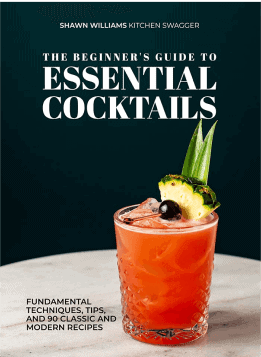This post may contain affiliate links. Please read our disclosure policy.
Sous vide steak is probably the easiest method of achieving perfectly cooked steak at precisely the temperature you desire. If you’re looking for a very reliable and completely stress-free method of preparing the perfect steak, look no further than sous vide.

Truth be told, I resisted the art of sous vide cooking for quite a while. I could not justify another kitchen gadget when I could achieve near identical results using the tried and true reverse sear method.
The truth is, the sous vide method offers a lot of benefits, especially if you’re newer to preparing steak. It’s easily the most foolproof way of cooking steak down to the degree of doneness, without having to worry about overcooking it.
The hands-free and flexible timing of sous vide allows you to fully focus on other parts of the meal and offers peace of mind that your hard work won’t go to waste. If I’ve piqued your interest, let’s dive further into the details!
Table of Contents
- What is Sous Vide Steak?
- Equipment Needed
- How to Sous Vide Steak
- Herbs and Spices
- Sealing the Bag With the Water Displacement Method
- How Long Does It Take to Sous Vide Steak?
- Sous Vide Steak Temperature
- Best Steaks for Sous Vide
- Cooking Steaks at Different Temperatures
- What to Serve with Steak
- Frequently Asked Questions
- More Steak Recipes
- Sous Vide Steak Recipe
What is Sous Vide Steak?
Sous-vide steak is a French process of cooking beef in an air-tight plastic bag, fully submerged in a temperature-controlled water bath. This may sound complex, but it’s a straightforward process with zero learning curve.
The sous vide advantage allows you to cook a steak that is uniformly cooked from top to bottom and edge to edge, without any varying level of doneness throughout. The sous vide method allows you to precisely control your steak’s internal temperature, by setting the water temperature to match the desired internal serving temp of your steak.
The science behind it prevents you from bringing your steak a degree higher than the water’s temperature, making it impossible to overcook your fancy, expensive cut of meat. While this method can be done by simply heating and maintaining water on a stovetop, a sous vide cooker allows for both precision and automated temperature control during the entire process.
If you’re looking for recipe inspiration, you can prepare any of my steak recipes using the sous vide method. For example, simply prepare the steak and top with balsamic or blueberry glaze like my filet mignon with blueberry glaze or filet mignon with red wine reduction. You can also easily serve this as a steak and chimichurri dish.
Equipment Needed
Most can get started with sous vide cooking by simply investing in nothing more than a precision cooker.
- Sous vide device: I have the Anova Culinary Nano Sous Vide Precision Cooker for $99. It works well and is easy to use.
- Stockpot or heat-safe food storage container: Anything big enough to hold a reasonable amount of water and fully submerge whatever you’re cooking. Ensure the container can withstand boiling temperatures.
- Cast iron skillet: I love cast iron for searing. Any good searing pan will work just fine.
- Sealable freezer bags or vacuum sealer: a vacuum sealer is the gold standard when it comes to sous vide however it’s not necessary. Name-brand freezer bags are usually BPA-free and work great.




How to Sous Vide Steak
Step 1.
Fill a large stockpot or sous vide container to the minimum fill line on your sous vide device. Set cooker to the desired temp and let water fully preheat.
Step 2.
Meanwhile, season steaks liberally with salt and pepper all over. Place each steak in a resealable freezer bag with rosemary, thyme, and whole garlic cloves. I like to place a few herbs on both sides of the steak.

Step 3.
Remove as much air from the bag as possible with a vacuum sealer or by partially sealing the bag and slowly submerging it in your water-filled container. The water pressure will force the air out of the top of the bag. Seal the bag just above the water line. See below for the before and after removing the air.


Step 4.
Sous vide the steak at your desired doneness temp for at least 1 hour. Once the hour is up, your 1-2 inch steak will likely be done. Heat for up to 2 1/2-4 total hours (see chart below for specifics). Before the steak is seared, it will look a little grey and drab. This is normal. Searing will add color and texture.

Step 5.
Finish in a skillet: Pat the steaks dry to remove excess moisture from the surface. This helps achieve a better sear. Heat oil in a skillet on high heat. Let the skillet get very hot (just when the oil starts to smoke). Place steak in the skillet with fresh herbs or garlic or herbs/garlic from the sous vide bag. Sear for one minute per side with optional butter.

Step 6.
Spoon the pan drippings over the steak (infusing with garlic herb flavor). Note, that additional searing time will risk overcooking your steak. Time this portion very carefully.
Step 7.
Finish on the grill: Alternatively, you can finish steaks right on the grill if cooking several steaks or larger cuts of meat. Turn the grill up high and let get very hot with the lid closed for about 10 minutes. Clean the grates, lightly oil the grates, and sear for 1 minute per side.
Step 8.
Remove steaks from heat and serve immediately. No rest period is required.
SMOKE WARNING: Cooking steaks at high temps in a skillet tends to get smokey. Open a kitchen window and turn on your kitchen’s overhead vent fan before you start to help with ventilation.

Herbs and Spices
For starters, I like to season every steak liberally with salt and pepper. This should be step one of preparing any sous vide steak. The spices will soak into the meat, tenderize it, and enhance some of the steak’s natural flavors.
From this point forward it’s entirely up to you in terms of herbs and spices. My favorite aromatics include rosemary, thyme, tarragon, and whole garlic cloves. These flavors tend to complement steak without overpowering it.
All herbs and aromatics should be added to the bag before you sous vide. The beauty is you can keep these spices in close contact with your steak while it cooks for an extended period.
Seasoning and enhancing with herbs and spices is just the beginning. Steaks can be served with au poivre sauce, horseradish sauce, bacon jam, blueberry or balsamic reductions, chimichurri, or herb butter.
Sealing the Bag With the Water Displacement Method
When it comes to sous vide, it’s important to get as much air out of the bag as possible to lock in the flavors and juices. If you don’t have a vacuum sealer, you can use any resealable gallon-sized freezer bag along with the water displacement method.
Place your steak in the bag along with fresh herbs on either side of the steak. Remove as much air as you can manually with your hands. Partially seal the bag and slowly submerge it in your water-filled container. The water pressure will force the air out of the top of the bag. Seal the bag just above the water line. Now you’re ready to sous vide.
Name-brand freezer bags are usually BPA-free and work best. A standard gallon-sized bag will work for most steaks, but larger cuts may require a 2-gallon bag.
How Long Does It Take to Sous Vide Steak?
Generally speaking, a 1-2 inch thick portion of steak will reach the desired internal temperature in about 1 hour. The steak can sit in the sous vide container for up to 4 total hours, fully submerged, before any detrimental effects take place. This includes potential bacterial growth from rare meat or meat fiber breakdown due to prolonged heat exposure.
The sweet spot lies in the 1-3 hour window when your steak is perfectly cooked and ready to serve.

Sous Vide Steak Temperature
Dialing in your steak’s internal temperature is incredibly easy with the sous vide system. Simply set your sous vide device to the corresponding level of doneness and wait for the water bath to reach the set temperature before adding the steak.
For example, a 1-2 inch steak will reach medium-rare doneness in one hour with your sous vide device set to 130°F. The steak can remain in the heated water bath for up to 4 hours with no detrimental effects to the steak.
| Doneness | Set Temperature | Duration |
|---|---|---|
| Very rare/rare | 120°F to 125°F | 1-2 1/2 hours |
| Medium rare | 125°F to 130°F | 1-4 hours |
| Medium | 135°F to 140°F | 1-4 hours |
| Medium well | 145°F to 150°F | 1-3 1/2 hours |
| Well done | 160°F and above | 1-3 hours |
NOTE: Chart applies to 1-2 inch thick steaks of any weight (which is most standard cuts). Steaks 1 inch or less will cook in 40 minutes.
Best Steaks for Sous Vide
You can use any cut of steak that is 1-2 inches thick. The cooking chart above will work for any of your favorite steaks, assuming it doesn’t exceed 2 inches in thickness. Larger steaks are best because they can easily be shared with multiple people, for example, a 2-inch thick 2-pound porterhouse is an amazing candidate for sous vide.
- Filet mignon (beef tenderloin)
- Ribeye
- T-bone
- Porterhouse
- Flank or skirt steak
- Sirloin (NY strip)
- London broil
Cooking Steaks at Different Temperatures
Sous vide is perfect if everyone likes their steak at the exact same temperature, however, that’s usually not always the case. If you can’t agree on a communal final temperature, you have two options. Let’s say we want to cook one steak to an internal temp of 130°F (medium rare) and another at 140°F (medium).
The easiest method would be to sous vide both steaks at 130°F but sear the medium steak for longer in a pan. This will provide extra heat and further cook the steak as needed. The only downside to this method is potentially overcooking the top and bottom due to extended searing.
The second method is much more precise but requires a bit of careful timing. Place the medium temp steak ONLY in your sous vide at 140°F until it’s done, about 1 hour. Now you can turn the water bath down to 130°F and place the second steak in the water bath. No harm will come to the other steak and it won’t continue to cook thanks to the lower temperature. Both steaks should be in about 2 hours and can now be flash seared at the same time.
What to Serve with Steak
A perfectly cooked steak needs some delicious sides. Some of my favorite sides include my cream cheese mashed potatoes, roasted red potatoes, and crispy parmesan and herb fingerling potatoes.
If you’re looking for some greens, try my roasted bacon and parmesan brussels sprouts, balsamic and honey brussels sprouts recipe, or my lemon and parmesan roasted broccoli!
Frequently Asked Questions
No, because of the method behind sous vide cooking related to heat/juice distribution, steaks can be consumed immediately after reverse searing. No 10-minute rest period is required.
Yes, in fact, you can seal preseasoned and fully prepared steaks in an airtight bag in the freezer and pull them out as you need. For 1-2 inch thick cuts, add an additional hour to the minimum cook time. No thawing is necessary.
No, you can use a single bag for multiple steaks as long as they fit in a single layer without overlapping. 2 stacked steaks in a bag will make the end result cook as if it’s a thicker cut. Multiple bags are also OK.
Yes, you can! This method works with any cut of beef and it is very repeatable. It also works well with a variety of finishing sauces in some of my other recipes.
More Steak Recipes
Enjoy this recipe? If you made this recipe, please leave a ★ ★ ★ ★ ★ star rating in the recipe card below & a review in the comments!
Sous Vide Steak Recipe

Ingredients
- 2 steaks of your choice, 1-2 inches thick (filet mignon, ribeye, t-bone, porterhouse, sirloin, flank or skirt steak)
- salt and pepper to taste
- 4 sprigs of fresh rosemary
- 4 sprigs of fresh thyme
- 2 whole garlic cloves, optional
- 1 tablespoon canola or vegetable oil, for searing
Instructions
- Fill a large stockpot or sous vide container to the minimum fill line on your sous vide device. Set cooker to the desired temp and let water fully preheat.
- Meanwhile, season steaks liberally with salt and pepper all over. Place each steak in a resealable freezer bag with rosemary, thyme, and whole garlic cloves. I like to place a few herbs on both sides of the steak.
- Remove as much air from the bag as possible with a vacuum sealer or by partially sealing the bag and slowly submerging it in your water-filled container. The water pressure will force the air out of the top of the bag. Seal the bag just above the water line.
- Sous vide steaks at your desired doneness temp for at least 1 hour. Once the hour is up, your 1-2 inch steak will be done. Heat for up to 2 1/2-4 total hours (see chart below recipe for specifics).
- Finish in a skillet: Pat the steaks dry to remove excess moisture from the surface. This helps achieve a better sear. Heat oil in a skillet on high heat. Let the skillet get very hot (just when the oil starts to smoke). Place steak in the skillet with fresh herbs or garlic or herbs/garlic from the sous vide bag. Sear for one minute per side with optional butter.
- Use a spoon to spoon the pan drippings from the pan over the steak (infusing with garlic herb flavor). Note, additional searing time will risk overcooking your steak. Time this portion very carefully. This part could get smokey, turn on the vent fan and open a window.
- Finish on the grill: Alternatively, you can finish steaks right on the grill if cooking several steaks or larger cuts of meat. Turn the grill up high and let get very hot with the lid closed for about 10 minutes. Clean the grates, lightly oil the grates, and sear for 1 minute per side.
- Remove steaks from heat and serve immediately. No rest period is required.
Notes
| Doneness | Set Temperature | Duration |
|---|---|---|
| Very rare/rare | 120°F to 125°F | 1-2 1/2 hours |
| Medium rare | 125°F to 130°F | 1-4 hours |
| Medium | 135°F to 140°F | 1-4 hours |
| Medium well | 145°F to 150°F | 1-3 1/2 hours |
| Well done | 160°F and above | 1-3 hours |
Nutrition
Nutrition information is automatically calculated, so should only be used as an approximation.



















What if you are cooking for multiple people and they like their steaks at different doneness?
Thanks Shawn, I just received a new Sous Vide and I had no idea what the whole concept was really about.
I get it now!
What an interesting new way of preparing food with precision, thanks for teaching me! 😎
I just found out about SOUS VIDE looked at a lot of recipes and read a lot about it. Was so impressed ordered one on Amazon. What impressed me was the fact I could leave it in the water till I was ready to use it. I am a senior, I had a stroke that left me with no energy by 3 pm. Now I will be able to leave the vegy’s and meat tell I am ready to serve the meal and it will be hot not overcooked.
Amazing! I will never cook steaks any other way again. I just seasoned our steaks with a little salt, pepper and Montreal steak seasoning. Then cooked for an hour with the soups vide and seared them in butter on our cast iron skillet. The steaks were a perfect medium and very tender. We used smaller strip steaks that were about an inch thick. I was nervous but the results were fantastic and honestly,it couldn’t have been more simple. Great recipe!
Hello, I would love to see more Sous Vide recipes. I totally over cooked my last steak it turned to mush. It was like a steak mousse.
Yes – most steaks will cook in an hour or less – I’d shoot for that for best results.